|
Bratby
& Hinchcliffe - Ancoats
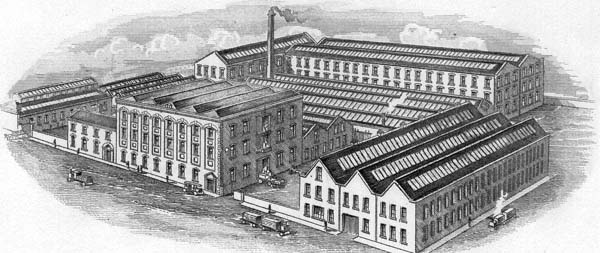 Bratby and
Hinchcliffe had an engineering company in Ancoats on
the corner of Sanford and Pott Street. As
their letterhead indicated, they were engineers to
the bottling trade and essence distillers. The
company was founded in 1864 and they continued
trading into the 1960s.
 They operated in the
carbonated soft drinks business which even in the
19th Century was a major industry. This
extract from "Carbonated Soft Drinks - Formulation
and Manufacture", edited by David P. Steen and
Philip R. Ashurst, says this about the
industry: "Continuous improvement in production
and packaging of carbonated soft drinks meant that by the middle of the
nineteenth century a manual bottling line was
capable of filling 100 dozen
bottles per day, but the introduction of steam
power increased that to
300 dozen per day. By 1900, it was estimated
that 70,000 people were
directly employed in the UK soft drinks industry
and 22,000 horses were used for product delivery. Total UK
production was estimated by Bratby
& Hinchcliffe to be
almost 300 million dozen half pints (ca. 900
million litres). For comparison, in 1990, government statistics show that
almost 18,000 people were employed in the
soft drinks industry
(manufacturing, distribution, sales and
marketing) producing 6717
million litres of drinks."
 It appears that Bratby and Hinchcliffe must have had another factory in Gorton because in a biography of Myra Hindley it claims that at one point she worked for them in Gorton for 6 months before she was fired for absenteeism. The aerial
photograph below, taken in 1953, shows the Ancoats
factory although somewhat changed from the engraving
above.
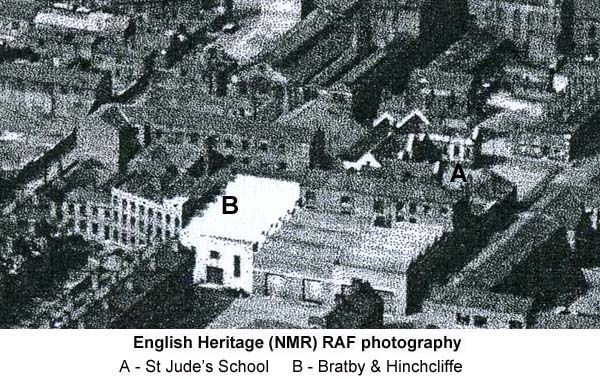 Below is my version
of a map drawn of the site in 1928. It shows
that Bratby and Hinchcliffe are neighbours to
Westmacott & Son, the Chemists and Mineral Water
Manufacturers and to St. Jude's School.
 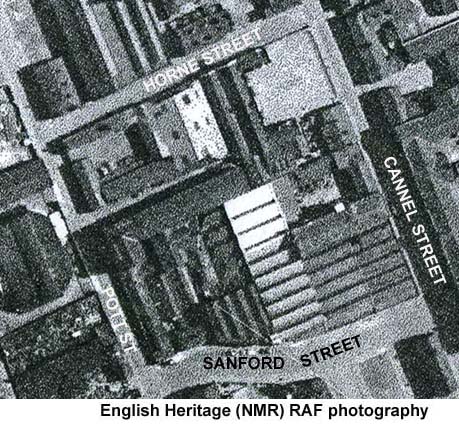 In later years the
factory was demolished prior to the building of the
Cardroom Estate. Built in the 1970s, the
Cardroom Estate took in its first residents in
1978. An article in the Guardian dated, "Built
with an eye on the failings of previous
working-class housing, the estate was low-rise,
with two-storey houses in a landscaped, villagey
cluster. It was pedestrianised, so children could
play outside. For several years it all worked
well. The first tenants were locals, and knew and
looked out for each other." .... "But,
gradually, other forms of social interaction began
to arrive. Drug dealers discovered the estate,
with its central location and bushes and blind
corners. 'They used to sell nearly at my front
garden gate,' says Agnes Lewis. 'When you went to
the shop, you couldn't get to the door for all the
gangs that were waiting outside.' The estate's
layout was also a gift to burglars and
joyriders."
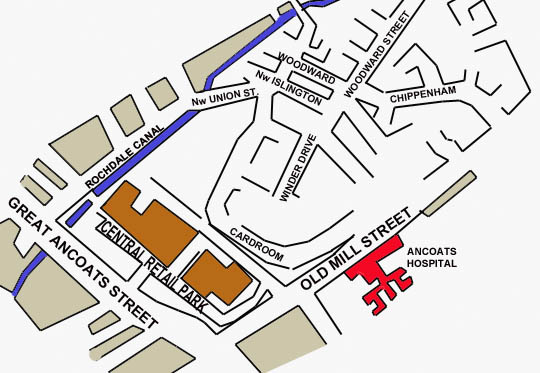 The area between Old Mill Street and the Rochdale Canal and behind the Central Shopping Mall has since been cleared as part of the redevelopment of the area by Urban Splash. 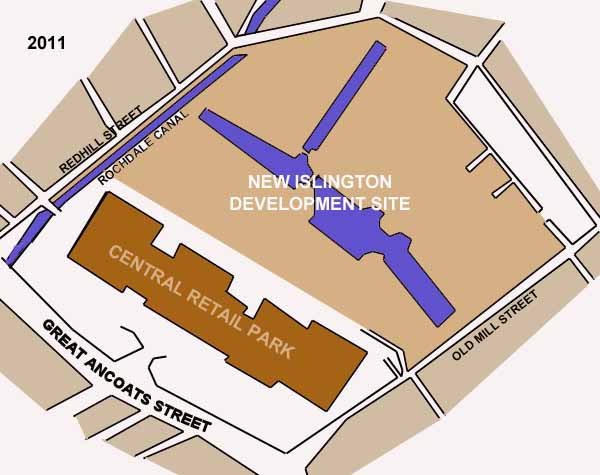 New waterways have been constructed around which the plan is to build innovative housing and a new school. The area has been rechristened "New Islington", which is in fact its earlier name. The plan was for the redevelopment to be completed by 2012 but the recession has slowed progress. Below you can see images of the site in March of 2011 where Bratby & Hinchcliffe once had their factory. 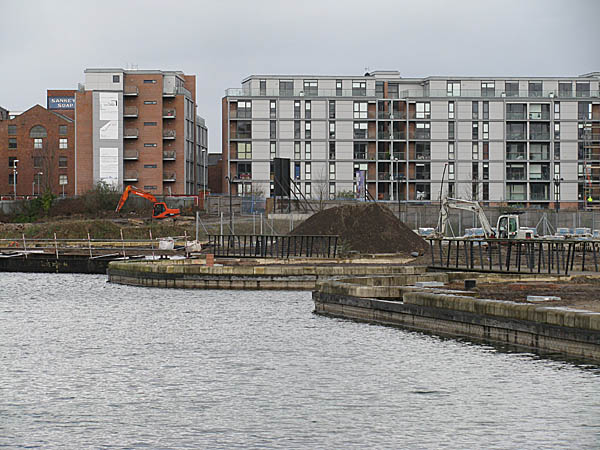 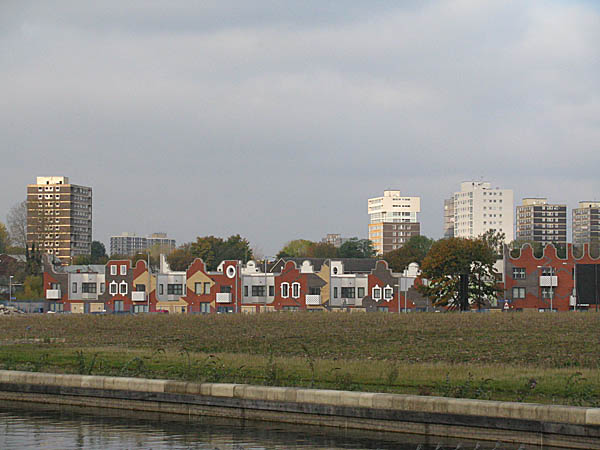 Close Window |